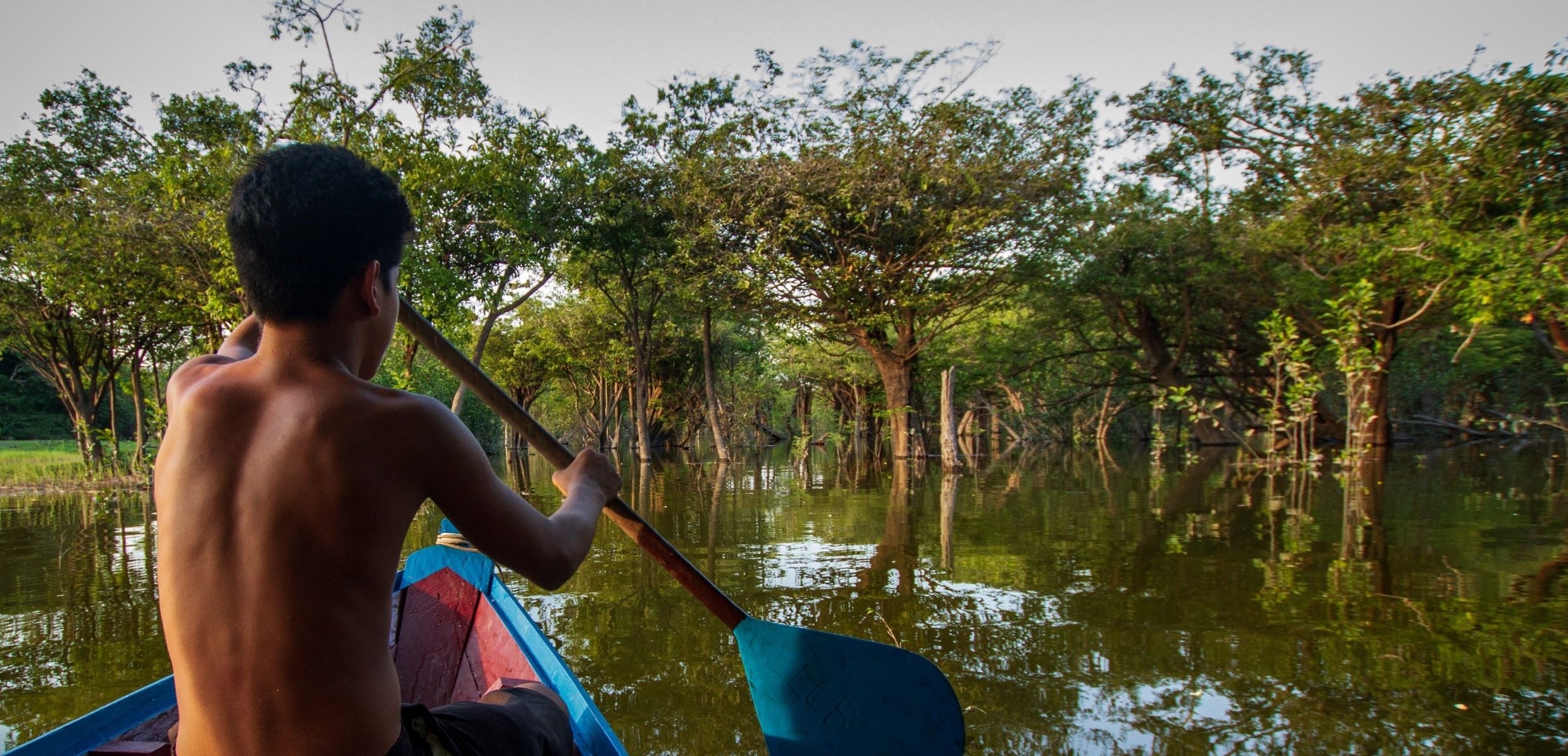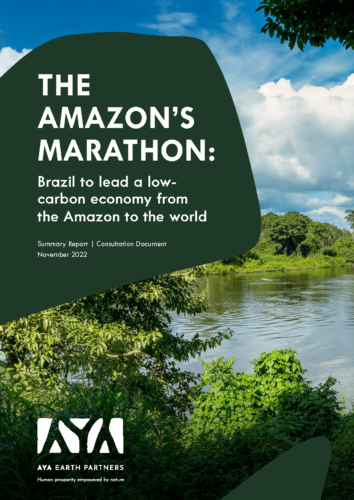At the heart of The Amazon’s Marathon is a development plan that calculates the economic opportunity behind a greenhouse gas emission mitigation strategy for Brazil. The report highlights several scalable projects that promote a nature-based, people-centred and sustainable approach.
Brazil can become a global example of sustainable prosperity, inspiring a new model for the Global South, says “The Amazon’s Marathon: Brazil to lead a low-carbon economy from the Amazon to the world“, a new report by Systemiq Ltd for AYA Earth Partners.
It finds that the country can mitigate 1.3 gigatons of carbon by 2030 – more than its current carbon footprint – and that by 2050, it could be contributing around 1.9 gigatons in carbon surplus to the rest of the world. But, to do so, Brazil must change from a resource-inefficient model, and instead embrace the opportunities in a nature-based, climate-positive and people-centric economy. The change could be worth between $100-$150 billion a year of additional GDP, making Brazil the first major economy – whether middle or high-income – to achieve net zero while at the same time boosting economic growth.
The analysis encompasses 11 critical pathways that could:
- help win the Race to Zero in Brazil and beyond;
- support the Race to Resilience for the 28 million people living in the Amazon; and
- ensure that the right infrastructure and enabling conditions are in place to prevail in both.
Stopping the slide, investing in the future
The report is blunt in assessing the country’s drive for a resource-intensive economic model, which is failing to deliver for its people. In many ways, Brazil is going back to the past, on indicators including industrial production, GDP and inflation. Perhaps most alarmingly, after significant advances during the 2000s, Brazil has returned to the global hunger map. It has slid back to levels last seen in the 1990s: more than 33 million people now go hungry. Environmental indicators have also regressed: after an 80% decline between 2004 and 2012, deforestation has increased for the past 7 years.
”Brazil is the only major nation that can build a stronger, more resilient and productive economy, while reducing emissions by 2030.
Patricia Ellen da SilvaCo-founder of AYA Earth Partners; Systemiq Partner, Brazil
A sustainable and socially inclusive plan
Among the many projects detailed in the document is the Green Corridor of the Amazon, a partnership of different actors to develop a green belt on the frontier of the Amazon rainforest, together with projects focused on the sustainable production of commodities generally associated with deforestation, such as cocoa and coffee. The report also proposes the creation of the Instituto Amazônia de Tecnologia, a public-private higher education centre that would promote a sustainable and socially inclusive bioeconomy through education, science, technology and innovation and similar projects -with the potential to generate almost $50 billion in economic value per year. The authors are also among those calling for a Food and Land Use Coalition (FOLU) Brasil: an initiative that would cover the entire food chain.
THE AMAZON’S MARATHON
Pivoting the Brazilian economy can deliver better outcomes for the region, the country and the world.
Shifting Brazil to a new green growth trajectory would require investment of between $35 billion and $76 billion per year. But, as the report points out, such investments can unlock increased productivity across the economy and open up export markets. Key new or growth markets for Brazil could include green hydrogen, payments for ecosystem services (PES), low-carbon metals and mining, and sustainable animal protein.
However, any transformation must be a resilient and people-centred one. The report’s resilience pathways point the way to wellbeing and prosperity for between 43 million and 48 million people; while retraining over 9 million people for the jobs of the future; and protecting ancestral culture and wisdom.


